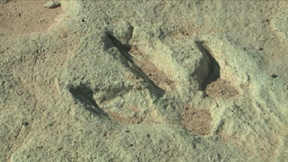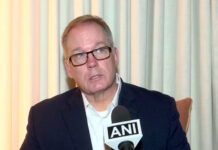 SALT LAKE CITY: A proposal from two congressmen to convert a central Utah dinosaur fossil quarry rich in Jurassic-period bones into a national monument gained a key endorsement from county officials.
SALT LAKE CITY: A proposal from two congressmen to convert a central Utah dinosaur fossil quarry rich in Jurassic-period bones into a national monument gained a key endorsement from county officials.
The Emery County public lands council voted unanimously to back a plan that would elevate the Cleveland-Lloyd dinosaur fossil quarry to what could be known as the “Jurassic National Monument,” said Randy Johnson, Emery County’s public lands adviser. The Emery County commission is also expected to back the idea.
The quarry was designated a national natural landmark in 1966, and it is a Mecca for paleontologists who have been coming since the 1920s to dig in what the Bureau of Land Management says is the densest concentration of Jurassic-period bones in the world. More than 12,000 fossils have been discovered.
“It’s a great idea. It’s a national treasure out there, and it’s unexploited,” Johnson said. “Nobody knows about it, and it gets very little use. It deserves to be enhanced and protected.”
Making the site into a national monument would require Congressional approval. The idea is being promoted by U.S. Rep. Jason Chaffetz as part of a broad eastern Utah land deal the congressman has been working on with Rep. Rob Bishop. They plan to introduce it later this year.
Ethan Migliori, chair of the Emery County Commission, said he has heard only minimal opposition, and that most of it came from ranchers worried about losing cattle-grazing rights in the monument’s boundaries. Migliori said they have been assured that won’t happen, clearing the way for widespread support.
The hope is that making it a monument would bring greater exposure, luring more tourists who often only pass through the county on their way to other national parks and natural destinations in southern Utah. “If something like this can draw more of those tourists into the heart of the county, it would help restaurants, hotels and even retail,” Migliori said.
The quarry site – about 150 miles southeast of Salt Lake City – has a small museum with exhibits and a skeleton of an allosaurus, a species common in the sediment that preserved the bones of dinosaurs that died there about 145 million years ago. Visitors can also see partially exposed bones still in the ground that are housed in a building.
The site is absolutely deserving of increased recognition, said Mark Loewen, a University of Utah paleontologist. The site and the Dinosaur National Monument on the Utah-Colorado border are the two most important quarries of Jurassic period bones in North America, Loewen said.
“We know more about allosaurus from this single hole in the ground than we’ve learned from anywhere else in the world,” Loewen said. “Researchers come from all over the world to study the bones that have come from that quarry.”
Utah state Sen. David Hinkins, a Republican whose district covers the site, said making it a monument would open the door to more funds that could help make the quarry nicer and more of a magnet.
Residents of the region support the idea because the acreage of the protected land wouldn’t expand much and because they’ve been told it could be run by a Utah-based advisory council rather than bureaucrats in Washington D.C., Hinkins said.
The Bureau of Land Management isn’t taking a side on the proposal. Utah spokeswoman Megan Crandall said the BLM “takes into account the interests of a wide range of stakeholders in making federal land use decisions, and we recognize and respect the importance of public and congressional input in considering protections for historic, cultural and natural treasures like the Cleveland-Lloyd Dinosaur Quarry.”
In the sweeping plan that Chaffetz and Bishop are working up, Dinosaur National Monument would also be elevated to a national park. The two new designations would bring additional funding, tourism, research and preservation to those spots and enhance Utah’s reputation as a hot spot for dinosaur aficionados, Chaffetz said. -AP






